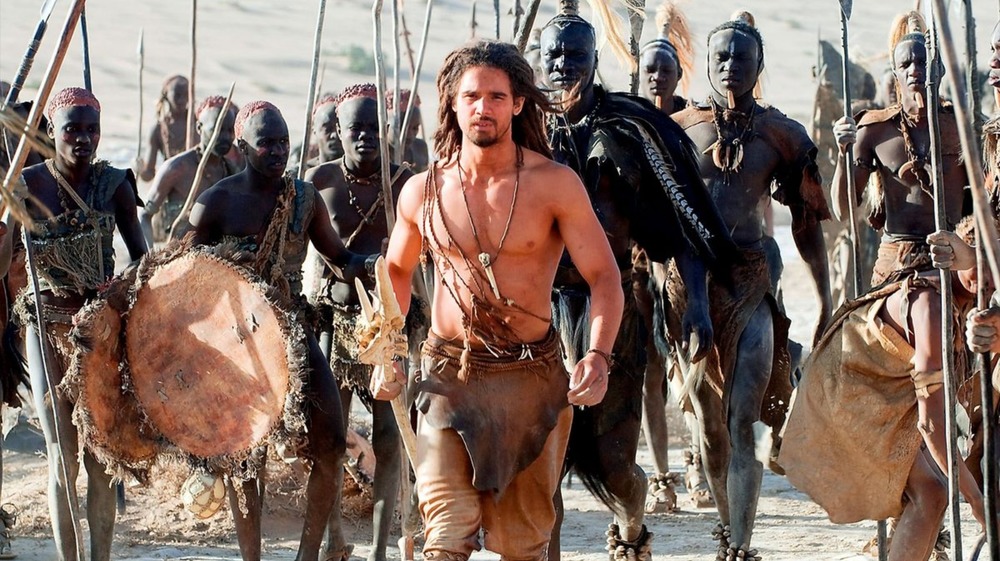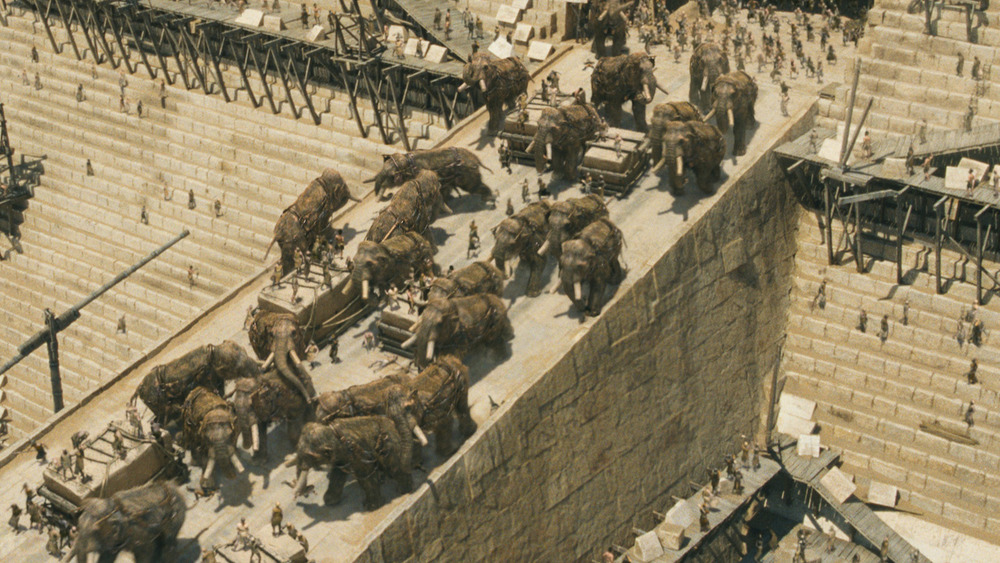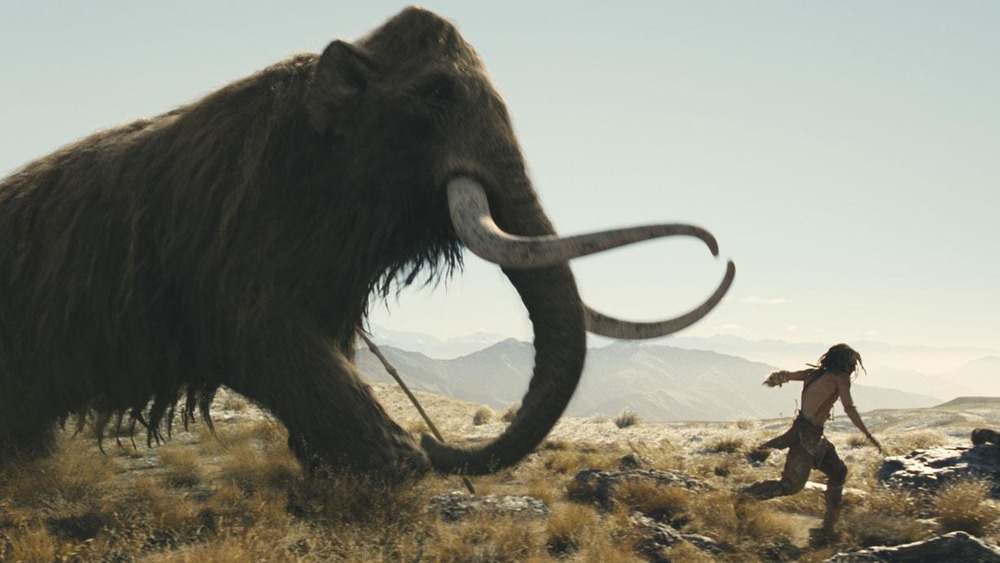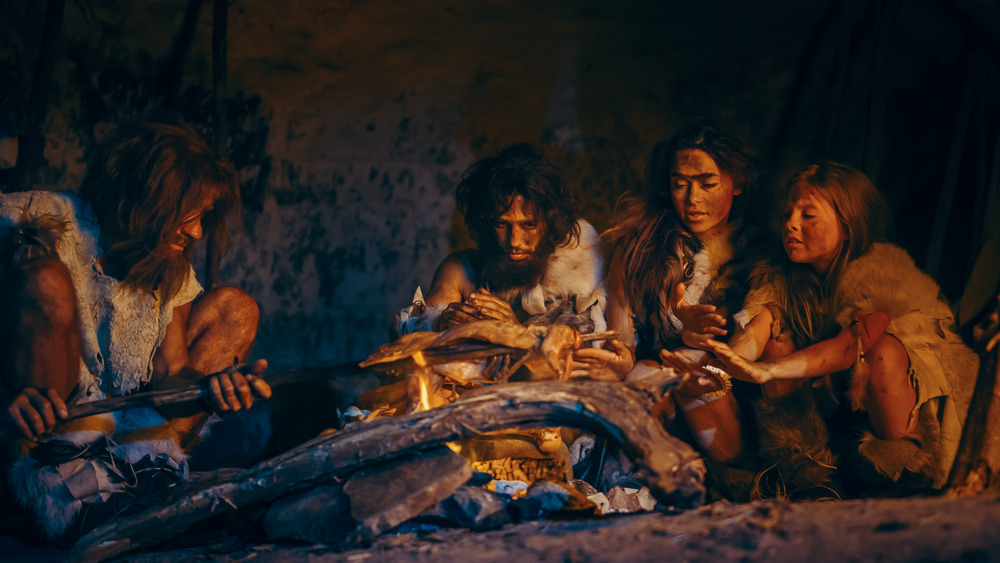The Reason Historians Don't Like 10,000 BC
Historical fiction is a difficult genre to pull off, especially in the film industry. Excitement, flair, and a good story are all more important to the average viewer than making sure so-and-so's trousers are the proper cut. Most filmmakers don't have doctorates in history, and even hiring an official historian/consultant is no certainty that the film will be historically accurate. Although historians might have a specific area of study, which definitely gives them an edge in terms of accuracy, they're only human, and not even the experts know everything there is to know about their area of expertise.
The further back we go into history, the more guesswork is involved in telling the stories. There's likely to be contention among historians over what is considered "accurate," particularly in terms of movies. Look at The Patriot, The Last Samurai, or Disney's Pocahontas. All three films made Reader's Digest's "Most Historically Inaccurate Movies Ever" because somebody along the food chain that is Hollywood decided that the historical record shouldn't get in the way of a good story.
Which brings us to the 2008 production 10,000 BC, where things get even less accurate. Monumentally inaccurate, really. Think of it this way: The film puts history in a tumbler, shakes it up, and pours a tall glass of annoyance for a metaphorical bar full of historians. Honestly, this film might as well be considered sci-fi.
A few millennia too early
The film 10,000 BC supposedly takes place in, well, 10,000 BCE. In the movie, this means an amalgamation of time periods so different they should've called the film "10,000 years or more smashed into a single time period for our convenience." To begin with, the film would've taken place around the end of the Pleistocene Epoch, known commonly as the "Ice Age," which Britannica says went kaput around 11,700 years ago.
For the sake of argument, let's go with that. We're in the Ice Age and there's all sorts of Ice Age-y stuff going on. Roughly 30 percent of the planet is covered in large sheets of ice. National Geographic tells us that agriculture is just being invented in the Near East. Somehow, our movie's mammoth-hunting hero, De'Leh, pops over a hill into Ancient Egypt after a few days' walk. And what does he see? These fictional Ancient Egyptians are building pyramids, using mammoths.
Let's start by saying there's no evidence anywhere in human history or pre-history that suggests our species managed to capture and domesticate mammoths. We were barely able to hunt them. It gets better (or worse, depending): As Gizmodo points out, this Egyptian society wouldn't have existed. According to National Geographic, the Great Pyramids weren't built until the mid-2000s BCE. The world also wouldn't have domesticated horses for riding, or boats, either, for thousands of years after the film is supposed to take place. And, that's just the tip of the iceberg.
Them there mammoths is all wrong!
Since the film is said to take place right around the end of the Pleistocene, we'll allow that mammoths may have still been around at the time, but 10,000 BC's depiction of the animal, though masterfully digitized, was definitely off. As we've already pointed out, mammoths were never domesticated as far as we (modern-day humans) know. The movie also shows a scene where a lead bull mammoth gets spooked, sending the herd running. There's a problem with this: Researchers have inferred that mammoths were likely matriarchal and cast out their males at an early age, according to National Geographic.
Though some historians may believe the extinction of mammoths was in part due to over-hunting by humans, archaeologists have found very little evidence of mammoth hunting, according to Slate, and there are many alternative theories to explain the animal's disappearance, such as disease, or the drastic climate changes seen at the end of the Ice Age. There is evidence that we hunted them, but chances are it wasn't an everyday activity as the movie suggests, and humans are believed to have hunted them differently than is depicted in the film. As Trey the Explainer points out in his YouTube show (with properly cited sources), humans likely hunted mammoths by dropping heavy stones or spearing them from high cliffs. We get it. Dropping rocks isn't visually dynamic.
Wrong age of man
The ages of humanity are typically defined by tools. The Bronze Age was the first to see humans manipulate metals as a craft. Before that, there was only the occasional crude instrument. But here's the thing: According to Britannica, the Bronze Age didn't begin until a little before 3000 BCE — or later, depending on where in the world we're talking about. In 10,000 BC, the world has managed to slingshot clear past the Bronze Age and into the Iron Age, which History says wouldn't have started until at least 1200 BCE.
If the film had followed the real-world timeline, the setting would've stayed around the Pleistocene near the beginning of what's known as the Neolithic, also called the "New Stone Age." The Neolithic, as National Geographic tells us, was characterized by the end of the Ice Age and, with it, hunter-gatherer society by means of agriculture. This time period, according to the Ancient History Encyclopedia, saw modified stone tools that were ground to produce more advanced shapes than what was seen in the previous two stone ages. So, all those weapons and all that farming wouldn't have progressed near the point at which it was depicted in the film, since agriculture was just being invented and metal implements were still well in the future. But, hey, the historical inaccuracy made for exciting situations. And as the old theater professor used to say, "Did you enjoy it? Then it was a good movie."



